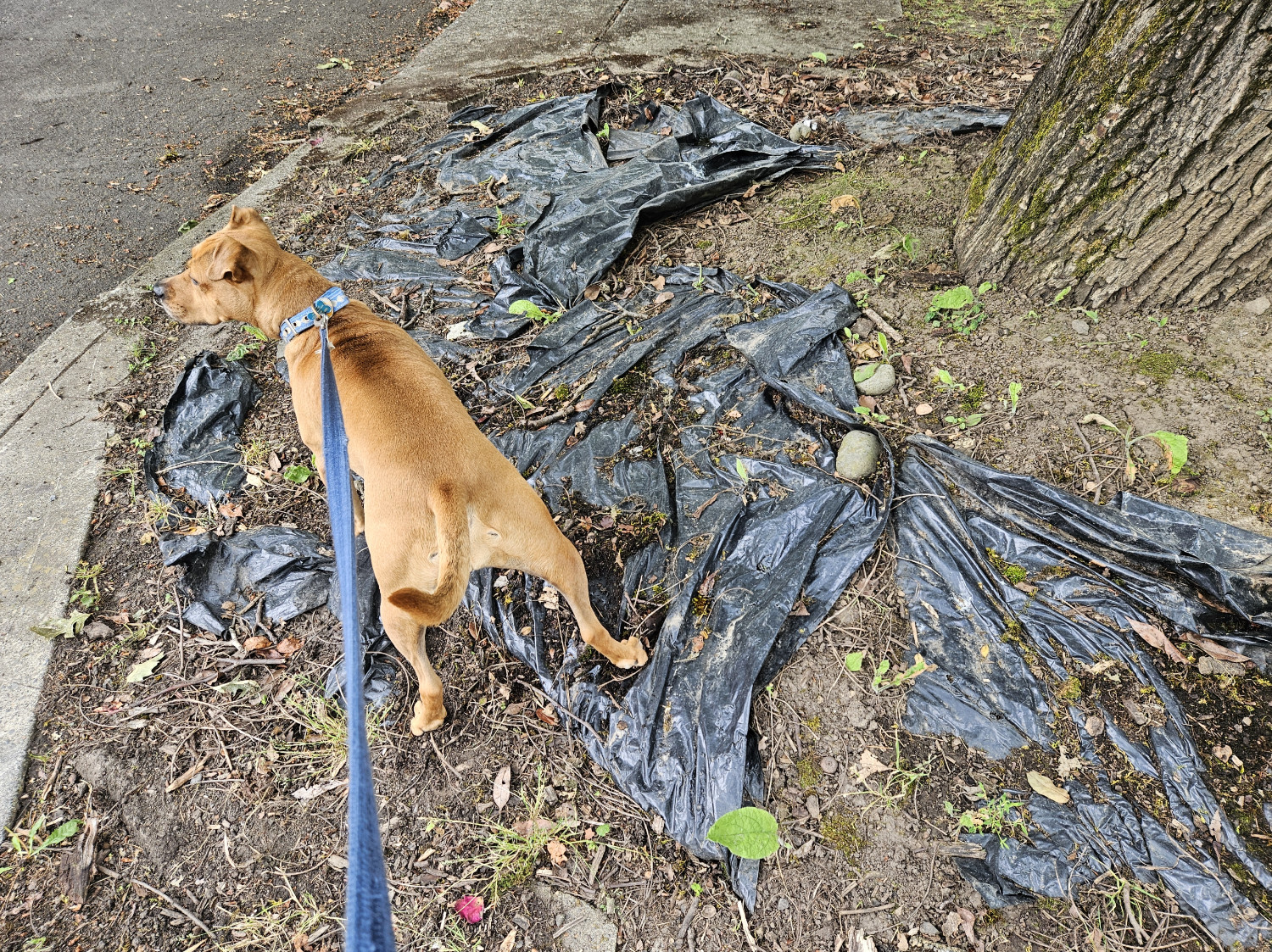The Trashlands

Barley, a dog, stands atop a partially submerged stretch of black plastic sheeting that was no doubt at one time buried in order to prevent weeds from growing in a yard.
Of the various tools used to sculpt a yard into a particular image, few are as radical as the roll of plastic sheeting. From the point of view of any germinating seeds that are unfortunate enough to find themselves beneath it, its denial of sun or moisture has an almost Eternal-Cylinder-esque kind of brutality, a wholly unnatural thing carving a boundary through an otherwise typical ecosystem. A major weak spot for such sheeting, however, is that is flat curvature is never a precise match to a yard’s topography, and the folding and wrinkling needed to shape it to the terrain’s contours are the cracks in the fortress through which the natural world can fight back. Given a sustained floral seige, and without steady reinforcement, the fate of any such boundary is to gradually be surfaced by erosion and undone by each days thousand little disruptions. In this respect, Barley pawing at this weird noisy boundary is just her doing her part to help.